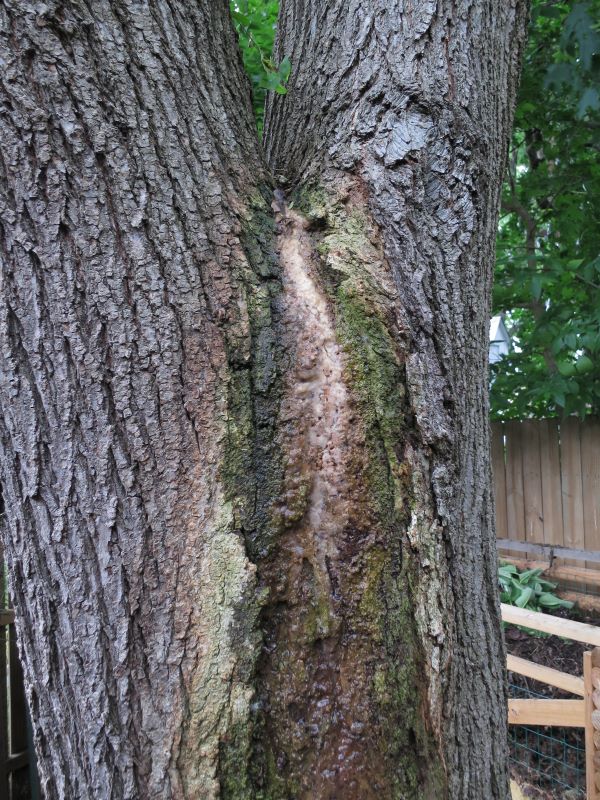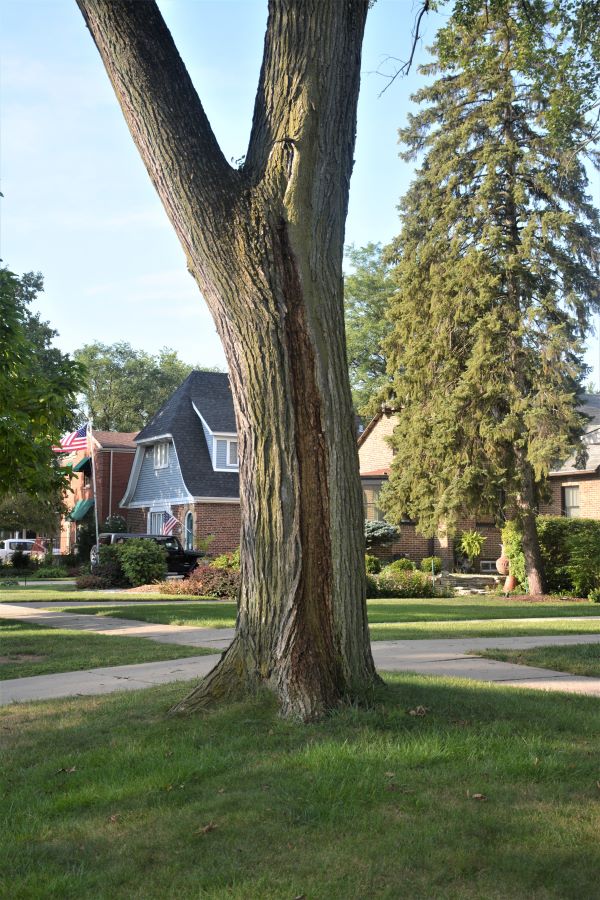Issue 11, September 9, 2021
Wetwood and Slime Flux
A tree that is oozing a foul-smelling fluid is likely to alarm anyone concerned about their tree's health. Add in discoloration and a slimy texture, and it is easy to understand their distress. Fortunately, the symptoms associated with wetwood and slime flux appear worse than they actually are.

Photo 1. Slime flux on Siberian elm, Ulmus pumila. Travis Cleveland, University of Illinois.
Wetwood refers to a condition in which the heartwood is water-soaked, often having a foul odor. Slime flux refers to the slimy, odorous fluid seeping from wetwood affected trees. Wetwood and slime flux are common on older elm trees in Illinois. We also see them on other tree species, including poplar, oak, maple, redbud, sycamore, and willow. Wetwood does not kill trees, but it is associated with trees in decline. Both conditions are usually unimportant in landscape trees aside from the diminished appearance of the bark. Slime flux is most conspicuous in the summer, although it can occur from April to December
The true cause lies within the tree, where bacteria in the inner sapwood and heartwood ferment, building internal gas pressure. This gas pressure forces the liquid to seep out of crotches, branch stubs, cracks, and other wounds. The liquid then flows down the trunk, wetting and soaking large areas of bark. Bacteria, yeasts, and other fungi often colonize the fluid resulting in a slimy texture, hence the name slime flux. As it dries, a light gray/white encrustation remains.

Photo 2. Slime flux on Elm, Ulmus sp. Travis Cleveland, University of Illinois.
There are no viable measures to prevent or control wetwood and slime flux, but the following may be helpful. Fertilize stressed trees in the spring or fall to stimulate vigorous growth. Use proper pruning techniques to encourage rapid callus formation over wounds. Disinfect cutting tools when working on trees known to wetwood. We do not recommend the use of pipes to "drain" wetwood and slime flux. In the past, pipes were to get the liquid off the trunk, but the process of inserting the pipe may cause further injury within the trunk.
Author:
Travis Cleveland